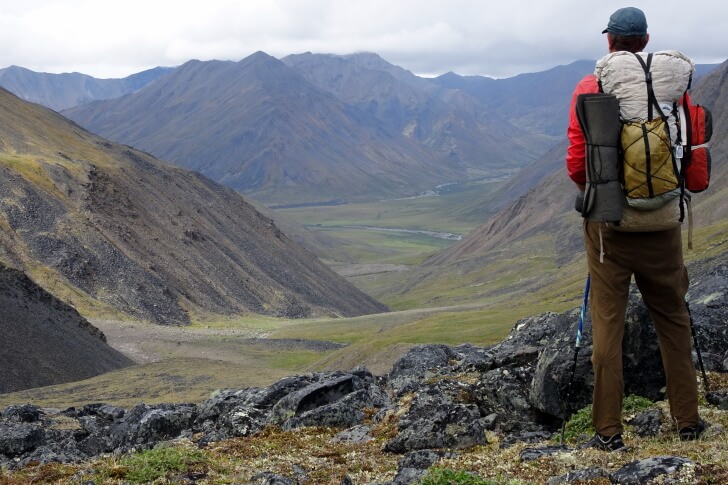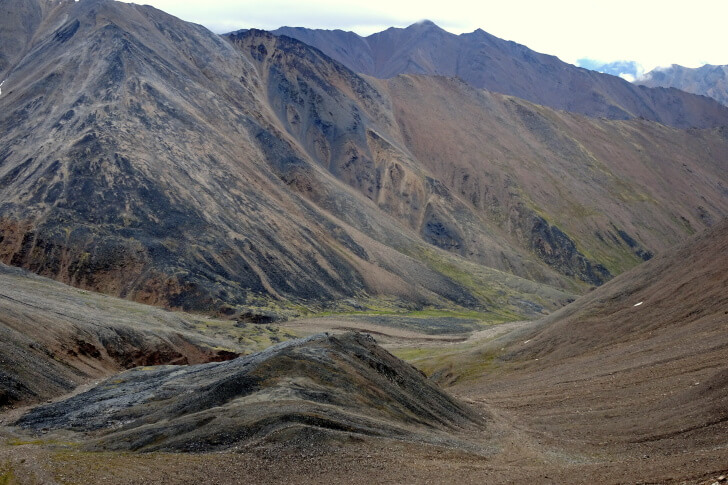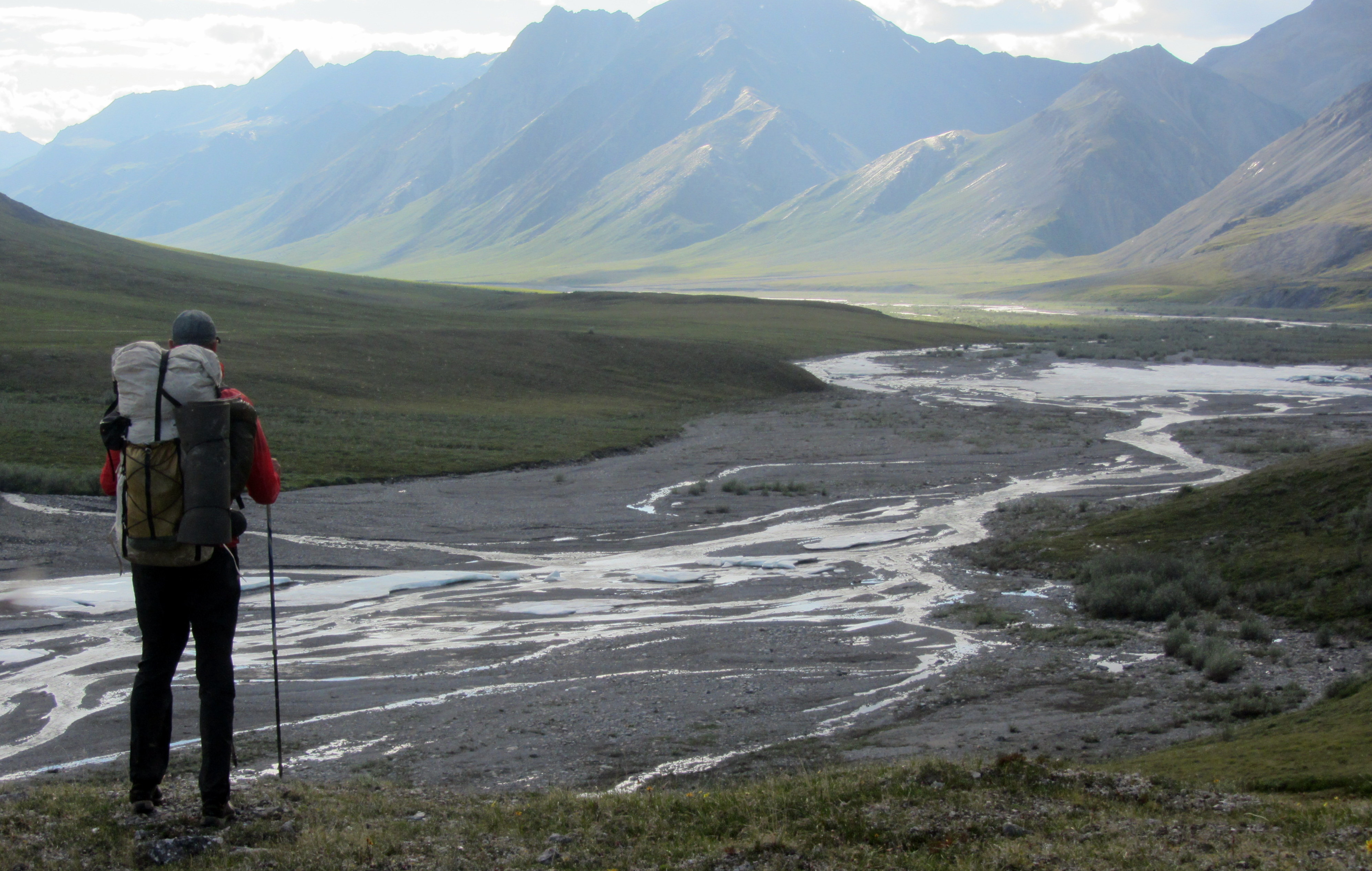Publisher’s Note
I first met the author, Jorgen Johannson, in late 2007 when he was a student on Backpacking Light’s first Wilderness Trekking III course – our advanced skills course that we use to train and cultivate our instructor pool. He showed tremendous grit, resolve, and positivity as we carefully picked our way through avalanche terrain along a fault line transecting Montana’s Beartooth Range during that wintry trek. Since then, I’ve had the joy of watching Jorgen publish books, cultivating a blog, writing for our website, and finding spiritual meaning and practical lessons on his expeditions. In this article, Jorgen masterfully replicates his experience with tussocks and river crossings in Alaska’s Brooks Range, blending unique objective articulation with an emotive sense that puts us one foot tippy-toppy on a tussock head or dancing in a gravelly Arctic riverbed. Enjoy! – RJ
Introduction
In 2014, I hiked through the Arctic National Wildlife Refuge (ANWR) of the Brooks Range, from Joe Creek close to the Canadian border to The Haul Road (Dalton Highway) along the pipeline from the Arctic. Traveling an undeveloped wilderness with no trails, bridges or other man-made artifacts for a month is, of course, a unique, but also addictive experience.
So in 2015, I returned to the ANWR for a couple of weeks of more leisurely browsing. I just stepped away from The Haul Road and looped east, letting the spirit move me until the food supply ran low. Spirit and spiritual are words that come easy when you spend time alone in an area like the Brooks Range. But you also have to manage the practical aspects, like crossing high rivers and high passes.
Hiking through the ANWR
Part 1 of my personal fragments from a vast wilderness is about fear and bears, which are not necessarily connected, and Part 2 is this article containing three sections:
- Staying High in the Brooks Range; what one encounters while following the tundra rivers from valley to valley.
- Crossing Fords and Moving Water; creeks and rivers are numerous, and you have to choose where to cross.
- Paradise in Alaska; you can find it in the wilderness, but can you keep it?

Staying High in the Brooks Range
There are of course difficulties hiking through a wild country without trails or bridges, like in the Artic National Wildlife Refuge (ANWR). However, I wonder if many of those difficulties are not more imagined than real. I have found during my six weeks in the area that the hiking is relatively easy. With some slightly hair-raising exceptions.
Let me start out by defining what I am talking about in this section. The ANWR is a big place, about the size of Ireland or South Carolina. The parts I have traveled are close to the continental watershed that divides the water between the Arctic Ocean and the Pacific.
During my thru-hike of the ANWR in 2014, I stayed high because I wanted to cross the numerous rivers I encountered where they were as small as possible. Staying close to the spine of the Brooks also kept me above timberline all the time, which simplified cross-country traveling and navigation. Because of this decision, I have no experience in the forested regions of the ANWR or the Brooks Range.
When I am talking about imagined difficulties, this is along the lines of what people might term ‘unlimited agoraphobia’. At least, that is my way of describing this to myself. As a backpacker since my teens, I have always dreamed of the true wilderness, where there are no roads, trails or houses within days of walking. Areas like that are so unusual to encounter in the world of today that I sometimes do feel a sense of exposure in huge, wild areas where there are neither trails nor people.

Understanding the Vast Quality of the ANWR
I remember the first time I felt this sort of vertigo in a big and uninhabited land surrounding me. A couple of years ago I was hiking into and packrafting through the wonderful Nahanni National Park Reserve of Canada’s Northwest Territories. This park and world heritage site covers an area about the size of Maryland, USA. It is smaller than the ANWR, but not exactly minuscule. One evening, cooking my usual noodles by the rapidly flowing South Nahanni River, I felt a chill run down my spine when the immensity of the surrounding wilderness struck me.
The feeling reminded me of coming close to the brink of a high precipice. Even if you do not suffer from vertigo, it is a bit scary, and you take great care, but you still cannot help wanting to look over the edge. Last year on my first visit to the ANWR, having been flown out to the Yukon border, I had a similar feeling when beginning my thru-hike of the national refuge. To the west, there was only my resupply destination in the middle of nowhere until I reached the Pipeline and The Haul Road some 350 miles away. But once I started hiking, this frisson passed, and I could just bask in the feeling of traveling through a huge wilderness on my own. This year, returning to the ANWR and the Brooks Range, I had no such sense of trepidation. I felt at home; I knew what was waiting.
Real-Time Navigation: Tussocks vs. Willows vs. Gravel vs. Game Trails
So, if you are a backpacker who has not traveled much off-trail, there are of course skills you have to acquire to venture into an area like the ANWR. However, what I hope to convey, it is not as difficult as one might imagine and many of the supposed dangers could be exaggerated or even imagined.
Member Exclusive
A Premium or Unlimited Membership* is required to view the rest of this article.
* A Basic Membership is required to view Member Q&A events




Home › Forums › Brooks Range Backpacking: Practical Lessons Learned From the Arctic National Wildlife Refuge